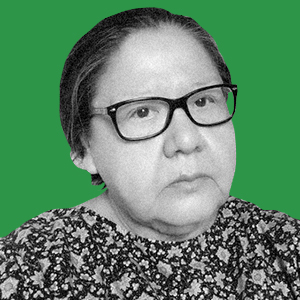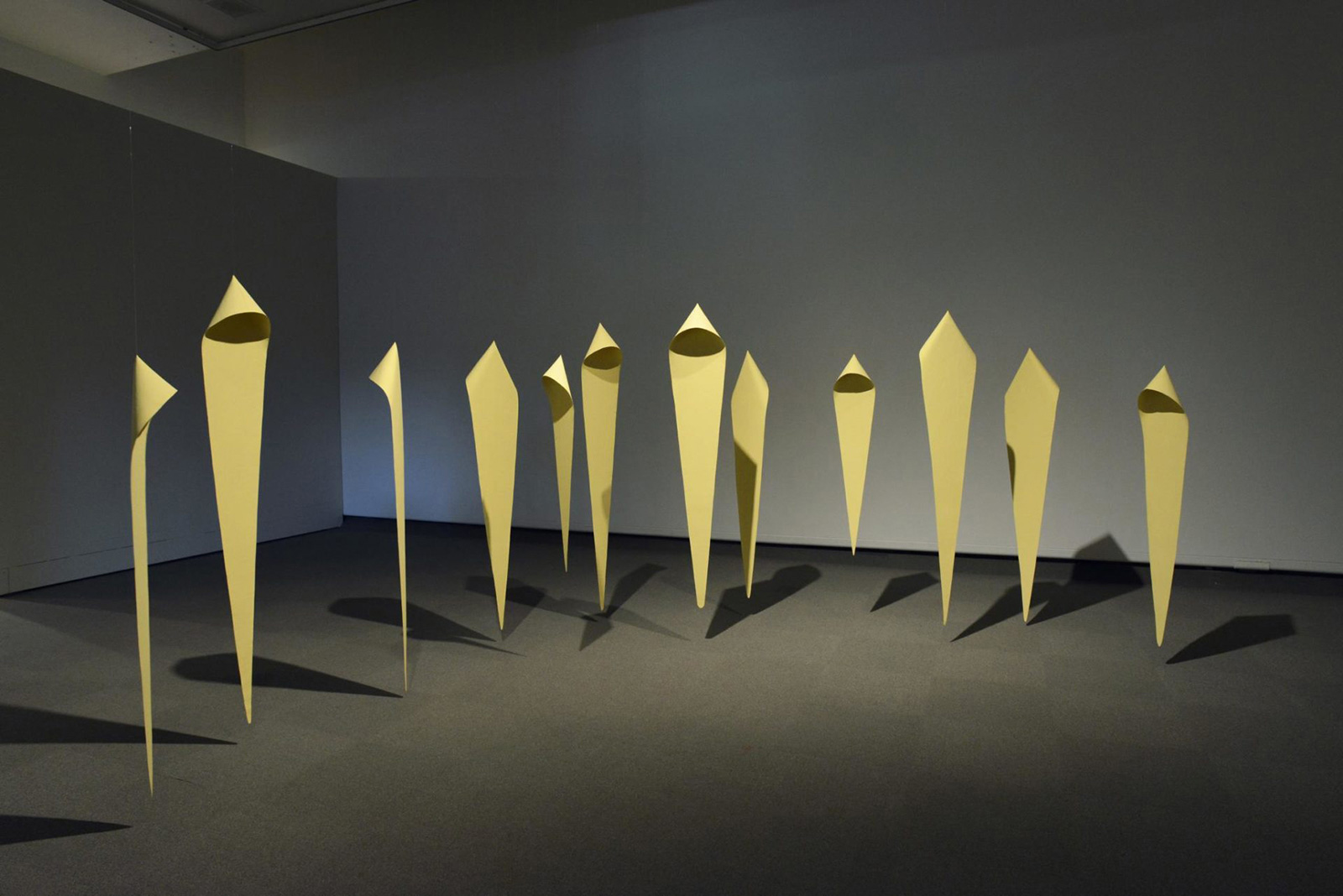2021
Faye HeavyShield Born 1953 on the Blood Reserve, Alberta

Faye HeavyShield Born 1953 on the Blood Reserve, Alberta
In HeavyShield’s work, an aesthetics of humility combined with Blackfoot language is presented through a poetically minimalist lens.
To experience the work of Faye HeavyShield is to step into a world that reflects the artist’s environment. HeavyShield’s art draws upon Kainai ways of being, which are expressed through a relation to the land. Prairie grass, river coulees, and wind were all a part of her upbringing in Southern Alberta. It is a place that has been described as wide-open or uninspiring—a monotonous expanse of earth and sky—but one in which boundaries are a foreign concept that tug against essence. “The landscape is an extension of the body because we’re dependent on it, and to flip that, the landscape is dependent on us,” she has said. “It was one of the first things that I saw and smelled. I consider it a part of me.”
Drawing from this close relation to the land, whereby the environment is considered an extension of the self, HeavyShield has established an aesthetic that is based not so much on the modern-day idea of minimalism or abstraction, but on Blackfoot visual knowledge. She expresses that knowledge in a manner which may be likened to simplicity, but which is based on tradition and the way of life of cyclic peoples, whose visual communication is characterized by an economy of means.
Like Gershon Iskowitz, HeavyShield remains true to a deeply felt process and distinct aesthetic and she has imparted an important legacy for Indigenous artists on the Northern Plains throughout her significant career. In their deliberations, the jury cited not only the impact of her work over more than three decades and the visual language she has developed, but also her role as a mentor and the strength she has shown within the Indigenous community.
HeavyShield entered the Canadian contemporary art scene during her third year at the Alberta College of Art and Design in Calgary and her work, which stems from her perspective as a Kainai woman, is unique in comparison with other senior artists of her generation. She regards her work as her territory and continues to care for it long after it is released from her possession. This relational approach allows her ephemeral-like creations to evolve and breathe while in the care of institutional collections. In HeavyShield’s work, an aesthetics of humility combined with Blackfoot language is presented through a poetically minimalist lens. — Felicia Gay and Gerald McMaster
Valérie Blass
Catherine Crowston
Felicia Gay
Gerald McMaster
Stephan Jost

Aapaskaiyaawa (They Are Dancing), 2002. Collection of the MacKenzie Art Gallery
All images courtesy the artist.
The information is current to the date when the artist received the Prize; for current information, please see the artist’s and/or gallery’s website.